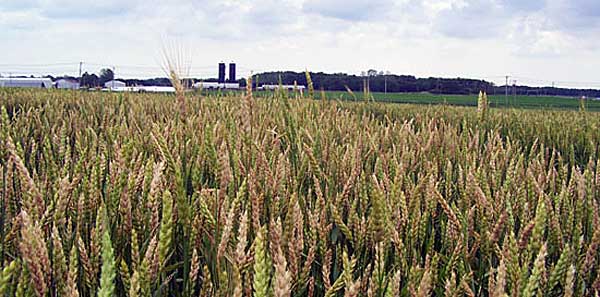Bugs on the Move
In evidence of global warming, pests increasingly endanger food supplies

Attention, climate-change skeptics: the pests are on the march. And they’re eating your potatoes. A study released this week shows that hundreds of agricultural pests and pathogens, including insects, fungi, bacteria, viruses, roundworms, and oomycetes (filamentous, fungus-like microscopic organisms), have moved north and south toward Earth’s poles at the rate of almost two miles a year for the past 53 years.
Biologists Daniel Bebber and Sarah Gurr of the University of Exeter in the UK combed through masses of observations of plant diseases and pests compiled by CAB International (originally the Commonwealth Agricultural Bureau), whose maps mark the earliest recorded date and location of specific pests. They counted 26,776 sightings of 612 crop-destroying pests since 1960, including some of the world’s most destructive species, such as the emerald ash borer, an invasive Asian beetle that in the past decade has killed tens of millions of ash trees across North America. Other pests in their study attack every crop from wheat and rice to tomatoes, potatoes, coffee, grapes, sugarcane, bananas, and corn.
Analyzing the data, the researchers found that in the 1960s about one-tenth of the pests were restricted solely to the tropics. Over the next five decades, more than two-thirds of the tropical pests spread out, most becoming global in their range. In anticipation, perhaps, of the naysayers, the team also examined the possibility of so-called observational bias in which developed countries, with sophisticated monitoring techniques, gather and publish data on pest incidence earlier than developing countries closer to the equator. But if observational bias were a factor, one would expect pests to move toward the equator. Because pests are clearly moving north and south, climate change must be playing a major role.
That is definitely bad news: as Bebber and Gurr point out, pests and pathogens already devour 10 to 16 percent of crops, both pre- and post-harvest. Fungi and oomycetes alone destroy enough food to feed about 8.5 percent of the world’s population. Fusarium head blight of wheat and barley, a ruinous fungal disease, thrives in warm, wet conditions. (The U.S. Department of Agriculture describes this blight, which has surged in recent years, as “the worst plant disease to hit the U.S. since the rust epidemics in the 1950s.”)
Bebber tells me their study is “just a small part” of the “huge body of scientific evidence regarding biological responses to climate change.” And even though people in poorer regions of the world will suffer greatly from climate change-induced crop losses, developed countries aren’t immune to the threat. “The emergence and spread of pests and pathogens will continue, and everyone should be aware that we need to monitor these organisms and institute tough plant protection measures in order to reduce the risk to agriculture,” Bebber says.

